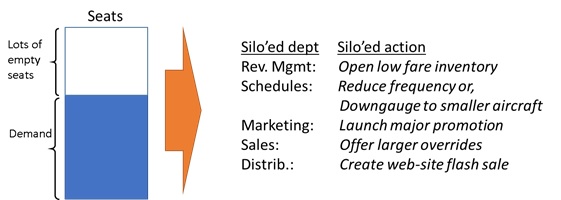4 reasons to focus on flight profitability across the whole airline organisation
Regular columnist Tom Bacon, who oversaw the design of flight profitability at American Airlines, shares his insights
My first job for an airline was designing and managing a major airline’s flight profitability database. American Airlines had developed an activity-based costing system that tracked monthly flight costs and constructed a P&L for each of thousands of daily flights. We organised a monthly cross-functional meeting with finance, revenue management, marketing, sales, and network planning to monitor flight profitability and to develop integrated action plans together.
But why would RM care about flight profitability? Don’t they have a much different mission that is more tactical: forecast demand for thousands of flights and fares on daily basis and optimise inventory? What difference does it make to RM whether or not a flight is profitable, whether the load factor is 30% or 100%, whether it’s a B777 to the Middle East or a regional jet to Laredo? Isn’t RM’s job to make the best of whatever schedule they are given?
There are four benefits to RM’s full engagement in monthly, cross-functional flight profitability reviews:
1. Focus: As RM must manage the whole network for the next 360 days, flight profitability can provide an important focus. A flight or market, buried in the macro stats for a large airline, can behave differently from the norm and may require special attention. A company-wide flight profitability forum can identify both ‘the worst markets’ and the ‘worst year over year performers’, among other filters, that can provide important focus to RM for special pricing attention.
2. Costs: RM typically ignores costs – the job is explicitly to optimise revenue so costs do not enter into most RM models. A flight profitability review brings costs into the picture – problematic station costs at certain airports or the higher unit cost of certain aircraft or ancillary services. The cost view can help RM identify opportunities for higher pricing (based on costs) or can stimulate a discussion of a service that simply won’t work.
3. Inter-departmental integration: When schedules and marketing and pricing are in silo’s they may all try to solve the same problem from their own unique perspectives – and thus operate at cross purposes. Reduced sales presence, a new special marketing campaign, an increase in fares, along with a reduction in service are each potentially logical individual action plans to address an unprofitable market, but in practice result in a jumble of actions. For example, it is quite common for airlines to simultaneously cut fares – to drive more traffic -- and to cut service (to cut losses) when pricing and schedules aren’t working together.

Integration also includes revenue management input into network planning decisions. In analysis of scheduling a larger aircraft on a particular flight, RM’s assessment of ‘spill’ is a critical factor. RM’s market analysis is often more rigorous than the often more macro view of network planning.
4. Segmentation: Pricing is fundamentally based on segmentation – how do we best segment the market to offer low fares when we need them and achieve higher fares when we can? A flight profitability review can help provide new ideas for segmentation – broadly, how can pricing strategy help address the weaker markets without impairing profitability of the more successful markets?
To sum up, let me just say that I recently worked with an airline client, which was in the process of rolling out a new flight profitability system. Finance properly took the lead on this initiative but the project was largely directed at providing better information to network planning. I highly endorsed their approach – but I recommended that flight profitability be a new tool for the whole organisation and that RM, in particular, jump on the system – and the new integrated planning process - as an opportunity for improvements in RM.
Design of a sophisticated flight profitability system is crucial to the future success of an airline - including activity-based costing and various economic adjustments to reported financials - but it is not enough. Cross-functionally integrated analysis and action plans, including RM, are necessary to ensuring the flight profitability is exploited for maximum benefits.
Tom Bacon is 25-year airline veteran and industry consultant in revenue optimisation. Contact Tom at tom.bacon@yahoo.com or visit his website http://makeairlineprofitssoar.wordpress.com/

